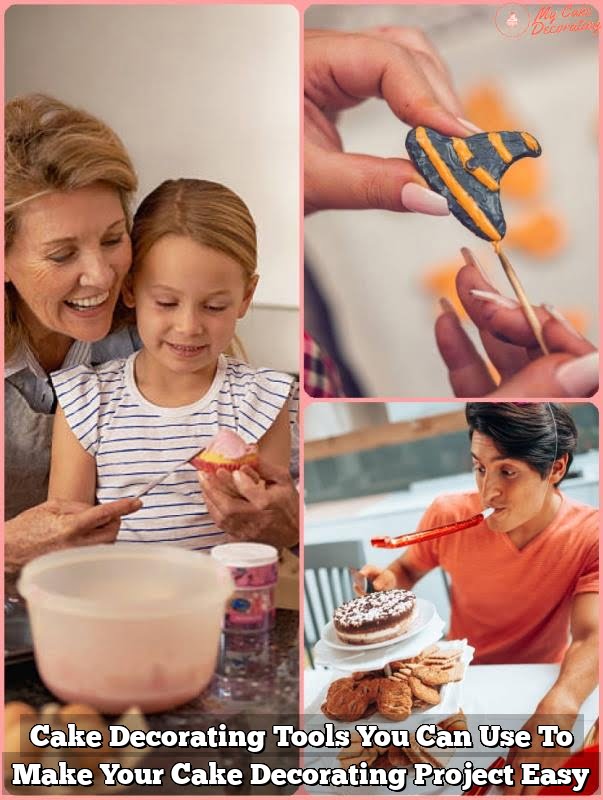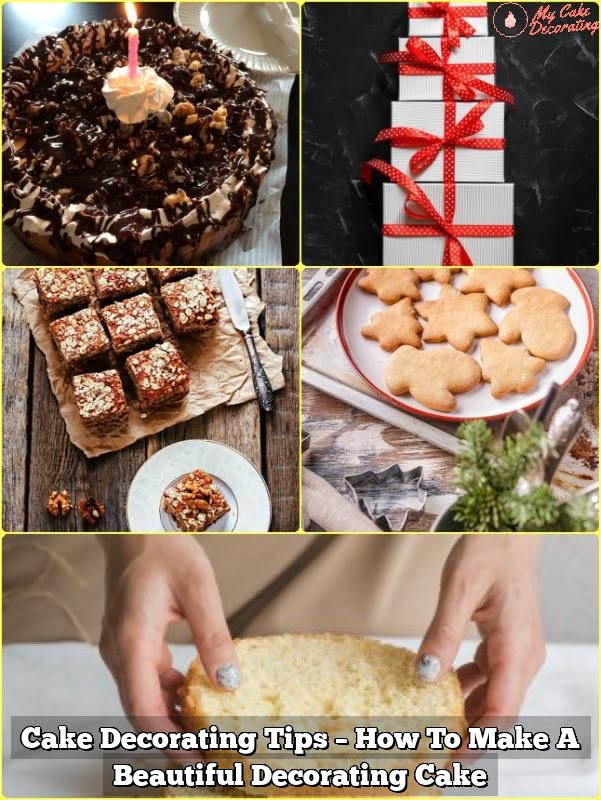Are you wondering how to make a firm cake for decorating? Whether you’re a beginner or an experienced baker, having a solid base is essential for creating stunning cake decorations. In this article, we will explore the importance of a firm cake for decorating and provide you with tips, techniques, and recipes to ensure your cakes are sturdy, beautiful, and ready for any decorative design.
When it comes to decorating a cake, the foundation is crucial. A firm cake not only provides stability for intricate decorations but also ensures that your masterpiece remains intact throughout the process. From choosing the right ingredients to implementing baking techniques and selecting the perfect frosting, every step plays a critical role in creating a firm canvas for your creative designs.
In this article, we will walk you through the process of making a firm cake for decorating. We’ll discuss how to choose the right ingredients, provide you with the perfect recipe, share baking tips, and offer guidance on cooling and setting your cake before diving into decorative frosting and structured designs.
By the end of this article, you’ll have all the knowledge needed to celebrate not only your amazing decorations but also the firmness of your beautifully crafted cake.
Choosing the Right Ingredients
When it comes to making a firm cake for decorating, the right ingredients are crucial. From flour to sugar and everything in between, each ingredient plays a role in the firmness of your cake. Here are some key ingredients to consider when aiming to create a sturdy base for your decorative masterpiece:
- Flour: Choosing the right type of flour is essential for a firm cake. All-purpose flour is commonly used, but some bakers swear by cake flour for its finer texture and ability to produce a firmer cake.
- Sugar: The type and amount of sugar can affect the texture and structure of your cake. Granulated sugar is typically used in most recipes, but some bakers opt for superfine sugar or even reduce the overall amount of sugar for a firmer result.
- Leavening agents: Baking powder and baking soda help your cake rise, but too much leavening can make it too light and fluffy. Be mindful of the quantity you use to ensure your cake remains firm.
In addition to these key ingredients, the inclusion of eggs, fats (such as butter or oil), and liquids (like milk or buttermilk) can also impact the firmness of your cake. When selecting these ingredients, consider their role in adding structure and moisture while still contributing to a solid foundation for decorating.
Ultimately, choosing high-quality ingredients and following a carefully crafted recipe will set you on the path towards creating a firm cake that is perfect for decorating. Paying attention to each ingredient’s role in the overall structure of the cake will ensure that you achieve the desired level of firmness for your decorative endeavors.
The Perfect Recipe
When it comes to making a firm cake for decorating, having the perfect recipe is essential. The right combination of ingredients and the proper mixing technique can make all the difference in the firmness of your cake. To achieve the ideal firm cake, follow these step-by-step instructions for making a delicious and sturdy base for your decorating endeavors.
Start by preheating your oven to the recommended temperature for your specific cake recipe. Proper preheating ensures that your cake will bake evenly and rise to the desired firmness. While the oven is heating up, prepare your cake pans by greasing them with butter or cooking spray and dusting them with flour. This will prevent the cake from sticking to the pan, making it easier to remove once it’s done baking.
Next, gather your ingredients and measure them out according to your recipe. It’s important to use high-quality ingredients, including flour, sugar, eggs, and leavening agents, to ensure that your cake turns out firm and flavorful. Follow the recipe instructions carefully, mixing the ingredients together in the proper order to achieve the best texture and structure for your cake batter.
Once you’ve prepared your batter, pour it into the prepared cake pans and smooth it out evenly. Place the pans in the preheated oven and bake according to your recipe’s instructions.
Keep an eye on your cakes as they bake, using a toothpick or skewer to test for doneness before removing them from the oven. With these step-by-step instructions, you’ll be well on your way to creating a delicious and firm cake that’s perfect for decorating.
Baking Tips
Baking a firm cake for decorating requires more than just the right recipe. It also involves using the correct techniques to ensure that your cake comes out sturdy and ready for elaborate decorations. Here are some essential baking tips to help you achieve the perfect firm cake:
- Use the creaming method: Creaming butter and sugar together creates tiny air bubbles that help give the cake structure. Be sure to cream them together until light and fluffy before adding other ingredients.
- Be mindful of measurements: Accurately measuring your ingredients is crucial for a firm cake. Use a kitchen scale for precise measurements of flour, sugar, and other dry ingredients to avoid ending up with a dense or crumbly texture.
- Don’t overmix the batter: Overmixing can result in excess gluten development, which can make the cake tough instead of firm. Mix the batter just until all ingredients are fully incorporated.
- Preheat your oven correctly: Preheating the oven to the correct temperature is vital for achieving a firm cake. A too-low temperature can lead to excessive spreading, while a too-high temperature can cause over-browning on the edges before the center is fully set.
By following these baking tips, you can ensure that your cake comes out perfectly firm and ready for decorating. Remember that patience and attention to detail are key when it comes to achieving a flawless base for your decorative masterpiece.
Cooling and Setting
Once your firm cake has finished baking, it’s crucial to give it the time it needs to cool and set before you begin decorating. Rushing this step can result in a cake that is too soft and crumbly, making it difficult to work with when adding decorative touches.
To properly cool your cake, remove it from the oven and place it on a wire rack. This allows air to circulate around the entire cake, helping it to cool evenly. It’s essential to let the cake cool completely before attempting to remove it from the pan, as removing it too soon could cause the cake to break apart.
After your cake has cooled, carefully run a knife along the edges of the pan to loosen the cake. Then gently invert the pan onto a cooling rack. If your recipe calls for it, allow the cake to continue cooling in the pan for a specific amount of time before removing from the pan entirely. This step will ensure that your firm cake maintains its shape and structure for decorating.
| Temperature | Time |
|---|---|
| 350°F | 30 minutes |
| 375°F | 25 minutes |
| 400°F | 20 minutes |
Decorative Frosting
Consider Your Cake Flavor
When choosing the perfect frosting for your firm cake, it’s important to consider the flavor of your cake. If you have a rich chocolate cake, a light and fluffy frosting like whipped cream may not hold up well. On the other hand, a dense buttercream frosting would complement the richness of a chocolate cake perfectly. Similarly, if you have a light and airy vanilla sponge cake, a heavy ganache might overpower the delicate flavor.
Texture and Consistency
The texture and consistency of your frosting should also complement the firmness of your cake. For example, if you have put in effort to ensure that your cake is sturdy and can hold intricate decorations, it’s important to choose a frosting that is equally stable. Buttercream frostings are known for their thickness and stability, making them an ideal choice for decorating firm cakes.
Color and Decorative Elements
In addition to flavor and consistency, consider how the color and decorative elements of your frosting will complement your firm cake. If you’re planning on intricate designs or piping details, you may want to choose a frosting that holds its shape well, such as royal icing or fondant.
These types of frostings are ideal for creating structured designs on firm cakes without compromising their stability. Additionally, think about how the color of the frosting will enhance the overall look of your decorated cake.
By considering these factors when choosing the right frosting for your firm cake, you can ensure that both the taste and appearance of your creation are top-notch. Properly paired frosting will not only enhance the flavor but also add visual appeal to your beautifully decorated creations.
Structured Designs
Creating a sturdy base for intricate decorations is crucial when it comes to decorating a cake. The right foundation will ensure that even the most delicate and detailed decorations stay in place without collapsing or sinking into the cake.
One of the most popular methods for creating a structured design is using dowels or plastic supports within tiered cakes. These supports are inserted into the lower tiers to provide stability and prevent the weight of the upper tiers from causing any damage.
Another way to create a sturdy base for intricate decorations is by using a denser type of cake, such as pound cake, as the bottom layer. This type of cake can better support heavier decorations and elaborate designs compared to lighter, fluffier cakes. Additionally, ensuring that each layer of the cake is properly leveled before stacking will help create a stable base for decorating.
For those creating sculpted or uniquely shaped cakes, consider using a support system like wooden dowels or PVC pipes within the structure of the cake itself to maintain its shape and stability. These internal supports can be especially helpful when working with gravity-defying designs or particularly heavy decorations.
| Technique | Description |
|---|---|
| Using supports like dowels or plastic rods | Provide additional support for tiered cakes. |
| Choosing denser cakes such as pound cake | Better supports heavier decorations and elaborate designs. |
| Utilizing internal supports like wooden dowels or PVC pipes | Maintains shape and stability in sculpted or uniquely shaped cakes. |
The Final Touch
Choosing the Right Frosting
When it comes to maintaining the firmness of your cake during the decorating process, choosing the right frosting is crucial. Buttercream frosting is a popular choice for decorating due to its ability to hold its shape well and create a sturdy base for decorative elements.
You can also opt for cream cheese frosting, which provides a slightly softer texture but still offers good stability. Whichever type of frosting you choose, make sure it is well-chilled before applying it to the cake to prevent any sagging or melting.
Refrigeration
After you have decorated your firm cake, it’s important to keep it refrigerated until serving time. This will help maintain the stability of the frosting and ensure that all decorative elements stay firmly in place. If possible, store the cake in an airtight container or cake carrier to protect it from any potential damage.
Avoiding Moisture
Moisture can be the enemy of a firm cake, so be mindful of environmental factors that can affect the stability of your creation. Avoid placing your decorated cake in areas with high humidity, as this can soften the frosting and cause decorative elements to slide or droop. Additionally, take care when transporting the cake to keep it away from direct sunlight or heat sources that could compromise its firmness.
By following these tips for maintaining the firmness of your cake throughout the decorating process, you can ensure that your hard work pays off with a beautifully decorated creation that stays looking perfect until it’s time to serve and enjoy.
Conclusion
In conclusion, achieving a firm cake for decorating is essential for creating a beautiful and professional-looking dessert. By understanding the importance of using the right ingredients, following a perfect recipe, and utilizing baking tips and techniques to ensure the firmness of the cake, you can create the ideal canvas for your decorations.
Additionally, allowing your cake to cool and set properly before decorating, choosing the right frosting, creating a sturdy base for intricate designs, and maintaining the firmness throughout the decorating process are all crucial steps in achieving stunning results.
Once you have successfully created a firm cake, it’s time to celebrate your achievement and admire the beautiful decorations you’ve created. Whether you’re a beginner or an experienced baker, taking the time to perfect your cake’s firmness will result in visually appealing and structurally sound creations that will be greatly appreciated by those who get to enjoy them.
Remember that practice makes perfect when it comes to baking and decorating cakes. Don’t be discouraged if your first attempts don’t turn out exactly as you hoped – keep refining your techniques and experimenting with new ideas. With dedication and patience, you’ll soon be able to consistently produce firm cakes that serve as stunning canvases for your decorative visions.
Frequently Asked Questions
How Can I Make My Cake More Firm?
To make your cake more firm, there are a few tips you can try. First, consider reducing the amount of liquid in your recipe or adding an extra egg to provide more structure.
You can also try using cake flour instead of all-purpose flour, as it has less protein which can result in a softer texture. Another option is to chill the cake layers before frosting to help them set and hold their shape better.
How Do You Make a Homemade Cake Look Professional?
Making a homemade cake look professional involves several techniques. Start by ensuring your cake layers are level and even before assembling them.
Use a crumb coat of frosting to seal in any loose crumbs before applying the final layer of frosting, which will give the cake a smooth appearance. Consider using piping bags and decorative tips to add intricate designs or borders, and don’t forget to add any garnishes or toppings neatly and evenly for a polished finish.
What Is the Best Frosting for Sculpted Cakes?
When it comes to sculpted cakes, the best frosting would be one that is stable enough to hold its shape but also easy to mold and carve. Swiss meringue buttercream is often recommended for sculpted cakes because it is smoother than American buttercream and can be shaped more easily.
It also holds up well at room temperature, making it ideal for display cakes that may not be refrigerated. Another option could be ganache, as it sets firmly and can be sculpted like clay when chilled, though it may not have the same spreadable consistency as buttercream when at room temperature.

Welcome to my blog about home and family. This blog is a place where I will share my thoughts, ideas, and experiences related to these important topics. I am a stay-at-home mom with two young children. I hope you enjoy reading it! and may find some helpful tips and ideas that will make your home and family life even better!





